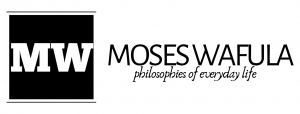The spread of COVID-19 has impacted people and businesses across the globe as millions continue to experience layoffs, furloughs and reduced hours. If your job has been affected by COVID-19, you might be asking yourself what the best next step is for you. If your industry has been widely impacted by the spread of COVID-19 and no longer offers reliable employment, it may be necessary for you to change careers or industries altogether. Or, perhaps you have desired a career change for some time and now is a natural opportunity to build the skills you need to enter a new industry or role.
No matter your circumstances, there are strategies you can adopt to set yourself up for a successful career change. While times like these will present specific challenges, we will explore several steps you can take to transition into a new career
1. Perform a self and situational evaluation
One of the most important ways to invest your time during a career transition is by reflecting on your current situation. Doing so can help you set a strong foundation for understanding whether this is the right time to switch careers, what you want out of a career change and what you may need to do to make it happen. Start by asking yourself specific questions that will help you understand your current circumstances, such as: Is a career change the right answer to my challenges? Consider why you want to change careers.
Making a shift under the current circumstances will present unique challenges, so its important to consider whether there are other alternatives. For example, if you are unhappy with the roles you’ve held in the past, could it have been because of your company or manager instead of the job itself? Is now the right time? Changing careers may be necessary during this time if your industry or job has been heavily impacted and you are no longer able to find sufficient opportunities. For example, if you were a flight attendant and cannot find similar jobs, you may need or want to change careers now to find work.
If you can wait until a more stable and predictable time to change careers, you might consider whether now is the best and most opportune time for you. Can I weather the expected challenges? It might be true that to make a successful job transition, you must spend time building particular skills or building a new network of relevant relationships.
Its important to ask yourself if taking the time to do so is an option for you at this time, or if you need financial support by taking another job in the short-term. Is it worth the expected challenges? You might also ask yourself whether the payoff of transitioning careers is worth the challenges that may come with it. For example, while it might be time-consuming, stressful or costly to change careers, it could still be worth it if it will help you get a role that aligns with your long-term needs and values which we cover in the next section of this article.
2. Perform a professional audit
Taking some time to understand your qualities, qualifications and values can help focus your career transition and narrow down your career path options if you haven’t already. Doing so can also help you understand how you might position yourself during the job search. Start by asking yourself the following questions: Which soft skills do I currently have? Soft skills are related to your ability to work with others. Consider how well you communicate, empathize with clients or solve problems. Soft skills are often the most transferable, so identifying them early can help you understand the ways you might bring value to a new role or industry.
Which hard skills do I currently have? Hard skills are your technical abilities gained by education or training. These could include skills like a spoken language, knowledge of a specific software program or a certain method of project management. Taking inventory of your hard skills can help you identify if certain industries might be easier to transition into. Learn more about different types of hard skills and how they compare to soft skills in our comparison guide. Which skills am I interested in building? Once you have lists of the skills you already have, make another list of skills that you want to learn. They might be new skills you want to obtain or ones you already have some knowledge of but are interested in strengthening.
Try not to limit yourself here. Instead, freely explore activities that bring you joy or spark your curiosity. What are my biggest career “wins”? This may come easy to you or you might feel challenged by the task. Regardless, we all have some career “wins,” it just might require some reflection to identify them. Wins might be compliments from colleagues, recognition from managers, the measurable impact you’ve made at a company or a promotion. They could also be personal professional accomplishments, like winning certain awards or achieving specific goals.
Taking note of your wins can help you realize what you’re good at, what you like doing and how to communicate those achievements to employers throughout the hiring process. Communicating the impact you’ve made throughout your career can help employers quickly understand the value you’ll bring to their organization, even if you come from another role or industry. Which tasks (big and small) do I enjoy doing most? Draw from your “wins” and skills lists to get a better idea of which tasks bring you the most joy.
You don’t necessarily have to make a career out of your passion, but it certainly helps to follow a career path that includes some responsibilities that you know you will like. Evaluating which tasks you enjoy doing most can help you direct and prioritize your search for a new career. Do I have a “dream job”? If so, what is it? This is a good time to avoid limiting your options. Write down “dream jobs” that are more realistic, but also include roles that push the boundaries of what you think might be possible. You never know, at the end of your evaluations, the impossible may seem more within reach than you initially thought. This might also help you identify a role that’s stepping stone on the way to your dream job.
While the next position you take might not be exactly what you are looking for, you can still gain experience from it that will make you more qualified for your ideal role in the future. What are my core values and non-negotiables? Mapping your core values and needs to your job search is one of the most important steps of a career transition. Doing so can also highlight vulnerable industries that may not be evident when the job market is healthy.
Your values and needs should provide direction for the role, company and industry you select. Your values might include the desire to work for a mission-driven company, in an inclusive culture or for an organization that prioritizes work-life balance. Some examples of non-negotiables are long-term financial stability, job security or more flexible working hours
3. Perform an in-depth career path discovery
When considering a career change, there may be opportunities unknown to you that you might be qualified for or interested in—this is not uncommon. Take some time to explore new roles and career paths by reading job descriptions posted on websites like Indeed, others’ professional profiles and job-related articles. Find a position that intrigues you and research it further. For example, job boards and often suggest similar roles or articles based on your search history. When changing careers, it is important to read the job description instead of focusing exclusively on the job title. Many employers and industries use different titles for the same or similar roles.
For example, an “account manager” may be a sales executive or account coordinator/client success position depending on the organization. Pay close attention to the requirements and duties of jobs so you can evaluate whether the career would align with your skills, interests and values. This can also highlight the limitations of the situation. For example, you may find a role you like, but it requires a degree or certification that you would first have to earn. That might be feasible for you or it might mean that it’s not an immediate option. Either way, it helps you decide how to move forward. On the other hand, by thoroughly understanding your existing transferable skills, you can also identify jobs you might more easily get and succeed in. This is especially important to do if you have less time to make your career transition. In this case, try to focus on positions for which you meet at least 60% of the qualifications with your transferable skills.
Meeting 60% of the qualifications isn’t a hard rule, but it’s a good general guideline to help you determine whether it’s worth applying for. Start adding the job titles that interest you to a saved list. Consider collecting 15 to 20 jobs to start. Then, narrow this list down to the top three or five best options for you to further explore through informational interviews and industry outlook guides.
4.Narrow your job list
Next, select the top one or two roles you think you should pursue based on qualifiers such as your non-negotiables, career goals, transferable skills, available opportunity and barriers to entry. If you are considering multiple positions, it is ideal if they are similar. It can yield better results if you fully commit your reskilling and job search resources to one general area. Attempting to transition into multiple roles that require different skills could lead to more indecision and lesser qualifications for both options.
Once you’ve decided the role, you can begin to bridge the gap between the skills you have and the skills you need to be qualified for your new career. Before committing to a new degree or certification which can be costly, consider if free or low-cost online courses can help you learn new skills. Research industry-related books, articles or podcasts to begin building a foundation. You might also be able to learn new skills from volunteering or independent projects. All of these activities can be added to your resume and discussed in interviews.
5. Prepare your job search tools
A recruiter at Indeed shared his tips for a successful career transition including key strengths recruiters might look for in a candidate during COVID-19. especially now, it will be impactful to give recruiters specific examples of a time you adapted at work, how you have led through change or when you learned a new tool or process quickly. Businesses have experienced an extreme change in a short amount of time since the spread of COVID-19 and they may prioritize applicants who can not only adapt with them but also help the company thrive during change.
First, customize your resume so it shows your transferable skills in a way that relates to your new role. Consider building a strong “general” resume that reflects your new job search that can easily be further tailored to any given position description. Sometimes a career change that makes perfect sense in your mind …doesn’t jump out to someone on paper. Be sure to convey how and why your skills and experiences have prepared you to make the transition successfully. It is like building a bridge from your previous experiences and skills to the expectations and responsibilities of the role you are seeking: “It’s important to show how what you’ve done in the past—even if not the same—has prepared you for what you’re applying for. Stress your accomplishments and outcomes as well as skills instead of only writing about tasks and responsibilities. You should also start planning for how you’ll answer interview questions about your career transition.
Consider how you’ll position your background in a way that makes sense for your new role, what sets you apart from others and which transferable skills you should focus on:“ Put yourself in the shoes of the recruiter or hiring manager and think of the information they’ll want to learn, then think back to your experiences for examples you can draw on and provide ones that connect to the role. This is especially important if you’re seeking a career change or applying to roles that aren’t in your industry—your transferable skills may not be obvious if they were acquired in a different field, so you may need to highlight and adapt them in different ways framed by your new role.
If you can show why you’re interested in this particular position and why you should be a great fit for it, you will be setting yourself up for success by eliminating any guesswork on behalf of the employer.
6. Starting the job search process
You might be ready, now, to start searching for your new role in a new industry. As you ramp up your applications, set some guidelines for yourself. Remember that an economic disruption like the spread of COVID-19 will require extra patience with yourself and others. Set weekly application goals. These might change from week to week depending on your other commitments and what’s available, so set attainable goals based on what else you have going on and adjust them when necessary. Some weeks you might plan to apply to three jobs and other weeks you might apply to.
Balance the quality and quantity of your applications. It isn’t realistic to customize your resume or cover letter to every job you apply for, but you should be able to identify when it is necessary to customize and when you can use your general resume. For example, if you set a goal of applying for five jobs this week, try to organize them into one of two categories:
- Roles that only somewhat interest you or for which you meet less than 60% of the qualifications
- Roles that closely align with your goals or for which you meet more than 60% of the qualifications.
If the position falls in the second category, take the time to customize your resume for it. For all other positions, simply use the general version of your resume that’s tailored to your overall job search. Follow up on your applications. Don’t wait for recruiters to notice you. In many cases, employers receive hundreds of applications for a single job post. COVID-19 has likely amplified those numbers, so it’s easy to see how your resume might get lost.
Try to use social networking sites to connect with hiring managers, employees or recruiters at the company you applied for to see if they might have an update on your application status. Follow the steps outlined in our guide,
Tap into your network. Use your personal and professional network to identify new opportunities and learn about changes you can make in your job search to find more success. One of the best ways to improve is by learning from others’ experiences. You might be surprised by how many people are willing to give you a lead for a job, helpful advice or words of encouragement.
Balance persistence and self-care. Job searching can be tough and doing it during COVID-19 could be especially challenging. It can help to accept that rejection is a natural part of the process, allow yourself to feel what may come with it such as frustration or sadness, but shift toward positive thinking as soon as possible. Persistence is a powerful tool, so rise to the difficulties associated with your search and keep moving forward. It may seem strange to practise interviewing before you even have an interview scheduled, but it’s best to be ready as soon as the opportunity arises.
Write down your answers to common interview questions as well as any industry or role-specific questions, practice saying them out loud, develop your elevator pitch and maybe even try to use some of these talking points during your informational interviews. Doing so will strengthen your confidence and prepare you for the real thing.









